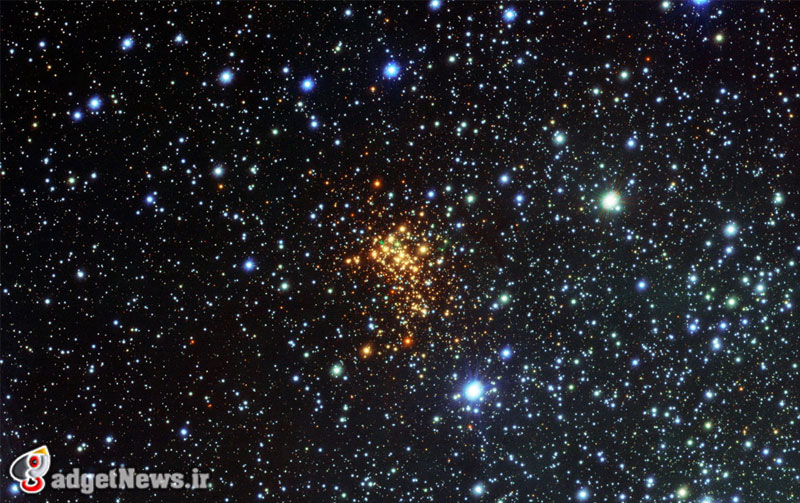
منجمان با تلسکوپ عظیم VST در شیلی (متعلق به رصدخانهی جنوبی اروپا) موفق به کشف بزرگترین ستاره ی کیهان به نام W26 شدند. این ستاره ۱۵۰۰ بار گسترده تر از خورشید است و بررسی آن به دانشمندان کمک میکند تا از چگونگی مرگ یک ستاره عظیم و کاشتن احتمالی بذر سیاره های خاکی و یا حیات از باقیمانده های آن، درک بهتری داشته باشند.
دانشمندان با بررسی خوشهی ستارهای وسترلوند یک (Westerlund 1) که بزرگترین خوشه ستارهای کهکشان راه شیری، با بیش از چندصد هزار ستاره و در فاصله ۱۶،۰۰۰ سال نوری است، موفق به کشف این اَبَرغول قرمز (W26) شدند. این غول قرمز در اواخر عمر خود بوده و بزودی به صورت یک ابرنواختر منفجر خواهد شد.
ستارههایی با جرمی ۱۰ برابر خورشید و یا بیشتر در مقایسه با دیگر ستارههای کم جرم، عمری بسیار کوتاه خواهند داشت. برخی فقط چند میلیون سال عمر میکنند و سپس سوخت هستهای خود را به صورت یک ابرنواختر منفجر میکنند. این ستارهها در مراحل پایانی عمر خود بسیار ناپایدار بوده و مواد را از لایههای خارجی خود به بیرون پرتاپ میکنند.
دانشمندان با مشاهده W26 در این خوشه متوجه شدند که این ستاره با ابری بزرگ و درخشان از گاز هیدروژن احاطه شده است که بسیار عجیب است. این نخستین بار است که یک سحابی یونیزه در اطراف یک ستاره ابر غول قرمز پیدا شده است . این ستاره خیلی سردتر از آن است که بتواند باعث تابش گاز شود. منجمان بر این باورند که منبع این تابش، دیگر ستارههای آبی داغ آن خوشه و یا یک همدم کم نور ولی کوچک و داغ است. عکسهای جدید نشان میدهد که این سحابی به رنگ سبز تابش میکند.
منبع : space
Biggest Star Ever Found Is Ripping Apart (Photo)
Astronomers were using the European Southern Observatory's Very Large Telescope Survey Telescope (VST) in Chile to study the largest star cluster in the Milky Way galaxy, a collection of several hundred thousand stars about 16,000 light-years from Earth known as Westerlund 1.
As they peered at W26, which lies within Westerlund 1, the team noticed something odd: The gigantic star is surrounded by a big, glowing cloud of hydrogen gas.
This is the first "ionized nebula" ever found around a red supergiant, and it will give scientists a new chance to study how W26 and other stars like it slough off their layers before possibly going supernova, shooting material into the interstellar medium, RAS officials said.
"W26 itself would be too cool to make the gas glow; the astronomers speculate that the source of the ionizing radiation may be either hot blue stars elsewhere in the cluster, or possibly a fainter, but much hotter, companion star to W26," RAS officials said. "The fact that the nebula is ionized will make it considerably easier to study in the future than if it were not ionized."
A new photo of W26 and Westerlund 1 shows the ionized nebula glowing green, standing out in a blanket of stars. Despite its size, the cluster looks somewhat dim because gas and dust obscure its view in visible light from Earth.
The VST instrument was able to peer through that cosmic haze to investigate the star cluster and W26. The new research is detailed in the Monthly Notices of the Royal Astronomical Society.
 گجت نیوز آخرین اخبار تکنولوژی، علم و خودرو
گجت نیوز آخرین اخبار تکنولوژی، علم و خودرو 





